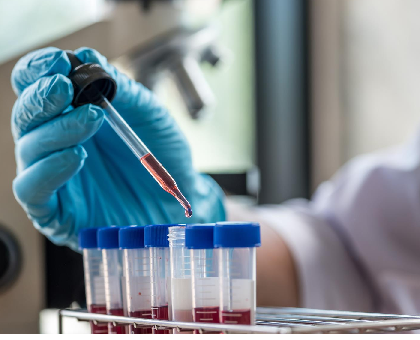Why Do Some Pregnant Women Type as Both Rh Positive & Rh Negative?

Rh typing is a standard part of a woman’s first prenatal visit. Sometimes, though, the results are anything but standard. Anywhere from 2 to 4 percent of women can type as both Rh positive (D+) and Rh negative (D-). This inconsistency then influences how OB-GYNs develop a treatment plan.
Below, we explore why Rh blood group discrepancies occur, what effect they have on obstetrics and how RHD genotyping may provide an effective solution.
What Causes Rh Blood Group Discrepancies?
For most blood group antigens, serologic testing reveals red blood cells (RBCs) to be either positive or negative for the antigen. Most discrepancies are typically attributed to sample or recording errors.
Rh typing, on the other hand, can be equivocal due to four factors:
- Genetic variability in the strength of D antigen expression on some RBCs
- Differences in the specificity of reagent antibody clones and reagent formulations
- Variation in laboratory testing methods
- Variation in the interpretation of the results
The genetic variation of D antigen expression has caused inconsistencies with interpretation in transfusion medicine practice, in particular. A 2012 College of American Pathologists (CAP) survey of more than 3100 laboratories showed there were substantial variations in reporting when centers tested for a serologic weak D phenotype.
Approximately 47 percent of sites reported patients with a serologic weak D phenotype as Rh positive, i.e. “D+,” 11 percent reported Rh negative, i.e. “D-,” and 30 percent used the term “weak D positive.” Likewise, the survey showed that 44 percent of sites administered Rh-negative blood after the weak D typing. The remaining 56 percent administered Rh positive blood. Fifteen percent also determined the patient was a candidate for Rh immune globulin (RhIG).
Simply put, inherited genetic variation and a lack of standardized reagents reporting leads to Rh typing discrepancies when a patient visits multiple centers.
While consistency is crucial across all disciplines, these variations pose a unique challenge for obstetrics and prenatal medicine.
How Do These Discrepancies Affect Obstetrics?
OB-GYNs use Rh typing to protect Rh-negative women from alloimmunization to the RhD antigen by exposure to RhD-positive RBCs, including RBCs expressing a serologic weak D phenotype. Researchers estimate that, alongside contemporary practices for antepartum and postpartum RhIG, current approaches are 98.4% to 99% successful in preventing RhD alloimmunization and hemolytic disease of the fetus or newborn (HDFN).
However, there are unwarranted consequences associated with the practice of NOT determining the RhD type by genetics (RHD genotype) of pregnant women and transfusion recipients such as:
- Excess use of Rh-negative blood (which is already in short supply)
- Inconsistent recommendations for and unnecessary administration of RhIG
- Unrecognized benefit of RhIg administration for some women
- Confusion for both OB-GYNs and their patients
In the face of Rh blood group typing discrepancies and their unintended consequences, OB-GYNs can instead use RHD genotyping to more accurately determine their patients’ Rh status and guide RhIG administration.
What Are the Advantages of RHD Genotyping?
According to the aforementioned CAP survey, selective integration of RHD genotyping in laboratory practices could improve the accuracy of RhD typing results as well as reduce unnecessary administration of RhIG in women with a serologic weak D phenotype.
To support these claims, CAP and the American Association of Blood Banks (AABB) convened a Work Group to review the current state of RHD publications and to standardize testing approaches. Per Sandler et al. (2015):
The Work Group estimates that if RHD genotyping were performed in RhD negative women with a serologic weak D phenotype in the United States, approximately 13,360 of these women could be managed as RhD-positive, avoiding the injection of approximately 24,700 doses of RhIG annually.
This calculation suggests that RHD genotyping could provide a safe, ethical and cost-effective alternative to traditional typing methods.
As a result of their research, the Work Group recommends that RHD genotyping be performed whenever Rh inconsistencies arise or when a serologic weak D phenotype is identified in a female of childbearing potential. Additionally, they advise that:
Persons whose RHD genotype is weak D type 1, 2, or 3 should be managed as RhD-positive with regard to administration of RhIG and/or selection of blood components for transfusion. For women with a serologic weak D phenotype associated with RHD genotypes other than weak D type 1, 2, or 3, the Work Group recommends that these women receive conventional prophylaxis with RhIG, including postpartum RhIG if the newborn is RhD-positive or has a serologic weak D phenotype. (Sandler et al., 2015).
These suggestions aim to not only standardize current procedures and reduce the number of Rh blood group discrepancies and confusion but also improve the overall quality of obstetric care.
For more on the Work Group’s findings as well as an in-depth analysis of how RHD genotyping could benefit your practice, download and read the Sandler et al. study here.
